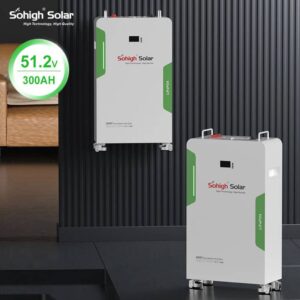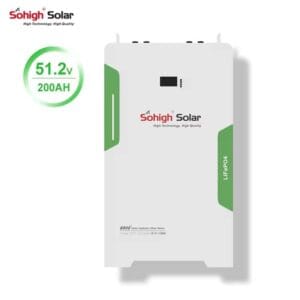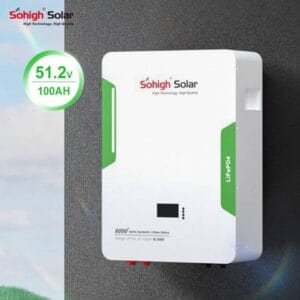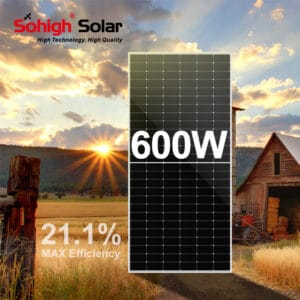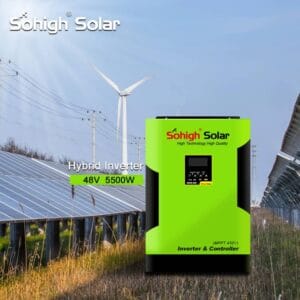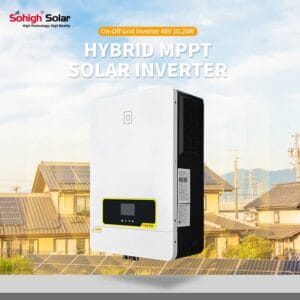Model: Sohigh LiBAT-200AH-51.2V
Brand: Sohigh Solar
Voltage(V): 51.2V
Product Origin: Guangzhou,China
Capacity: 200AH
Material: Lithium ion
Why Choose Lithium Iron Phosphate Battery
-Safety: There is a risk of fire or explosion of NCM batteries. However, lithium iron phosphate batteries can withstand punctures, short circuits, and will not spontaneously ignite after a crash.
– High temperature resistance: Lithium iron phosphate batteries can function in a wide temperature range below 60°C. For NCM batteries, it generally does not exceed 45°C.
-Long cycle range: The cycle life of LifePO4 is 6000 times, while that of NCM is about 1000 times.
-Warranty: Due to the longer cycle life, LifePO4 batteries also have a higher warranty than NCM batteries. So, in the long run, LifePO4 batteries can make your vehicle perform longer.
Ability to fully charge: Lithium phosphate is less stressed than other Lithium-ion systems if kept at high voltage for long periods of time. Under fully charged conditions, lithium phosphate is more resistant.
– Eco-friendly: For production, LFP batteries require less energy and have less environmental impact than NCM batteries.
Lithium-ion batteries should always be used with a protection circuit to prevent the battery from being overcharged or over-discharged. Selecting the correct circuit and applying it properly is critical to the life of the battery and your own safety. Sohigh Solar tests each battery and BMS/PCB/PCM before manufacturing and guarantees its function and safety.
BMS/PCB/PCM is the “heart” of lithium battery pack. A BMS (Battery Management System) is any electronic system that manages a rechargeable battery (cell or battery pack), such as monitoring its status, calculating secondary data, reporting that data, protecting the battery, controlling its environment and balancing it.
Electrical Characteristics | Nominal Voltage | 51.2V | |||
Nominal Capacity | 200AH | ||||
Energy | 10240Wh | ||||
Internal Resistance | ≤500mΩ | ||||
Cycle Life | >6000 cycles @1C 100%DOD | ||||
Months Self Discharge | <3% | ||||
Efficiency of Charge | 100% @0.2C | ||||
Efficiency of Discharge | 96~99% @1C | ||||
Standard Charge | Charge Voltage | 58.4±0.2V | |||
Charge Mode | 0.2C to 58.4V, then 58.4,charge current 0.02C(CC/CV) | ||||
Charger Current | 20A | ||||
Max. Charge Current | 50A | ||||
Charge Cut-Off Voltage | 59.2V±0.2V | ||||
Standard Discharge | Continuous Current | 100A | |||
Max. Pulse Current | 150A(<3s) | ||||
Discharge Cut-off Voltage | 40V | ||||
Mechanical | Charge Temperature | 0 ℃ to 45 ℃ (32F to 113F) @60±25% Relative Humidity | |||
Discharge Temperature | -20 ℃ to 60 ℃ (-4F to 140F) @60±25% Relative Humidity | ||||
Storage Temperature | 0 ℃ to 40 ℃ (32F to 104F) @60±25% Relative Humidity | ||||

